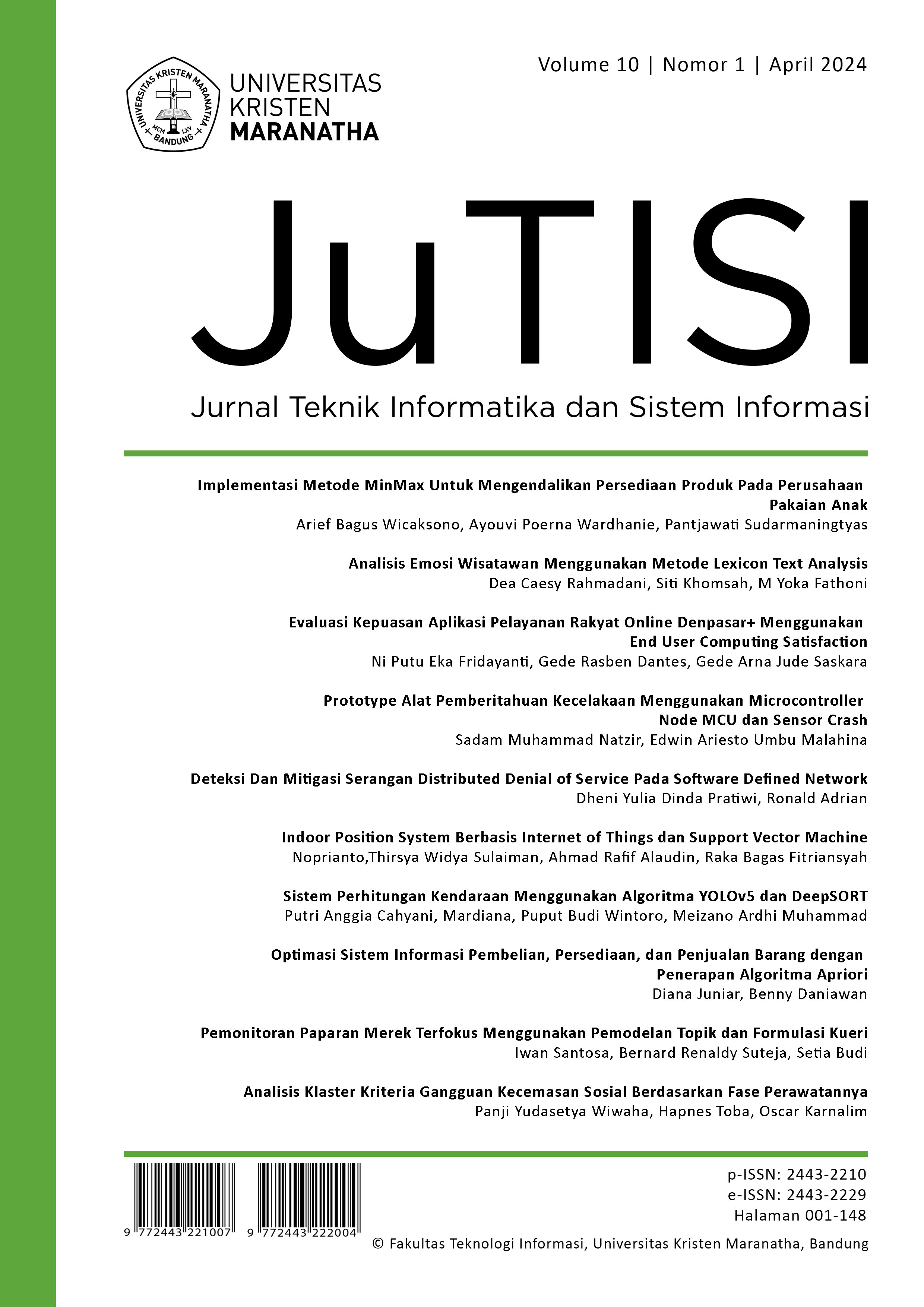Deteksi Dan Mitigasi Serangan Distributed Denial of Service Pada Software Defined Network
Isi Artikel Utama
Abstrak
Software Defined Network (SDN) merupakan pendekatan dalam pengelolaan jaringan yang memisahkan lapisan kontrol (control plane) dan lapisan pengiriman (data plane) dalam jaringan. Pada jaringan SDN, control plane dikendalikan secara sentral melalui perangkat lunak yang disebut controller, sementara data plane terdiri dari perangkat jaringan fisik seperti switch dan router. Akan tetapi, pemisahan ini menimbulkan banyak masalah keamanan. Oleh karena itu, kebutuhan untuk melindungi jaringan dari berbagai serangan menjadi hal yang wajib dilakukan. Distributed Denial of Service (DDoS) adalah salah satu serangan yang menjadi rintangan bagi pengguna SDN. Upaya melindungi jaringan SDN dari serangan DDoS diperlukan sebuah sistem yang dapat mendeteksi dan mencegah serangan tersebut. Pada penelitian sini, dibuat sebuah sistem yang digunakan untuk mendeteksi adanya serangan DDOS dengan menggunakan Snort IDS (Intrusion Detection System) dan pencegahannya dengan implementasi firewall pada server dengan menggunakan Iptables. Implementasi Snort pada sistem SDN mampu mendeteksi serangan DDoS dengan akurasi mencapai 95% serangan slowhttptest, 90% serangan slowloris dan 100% serangan LOIC. Rata-rata penggunaan waktu yang diperlukan untuk mendeteksi adanya serangan slowhttptest sebesar 0.72 detik, serangan slowloris sebesar 0,36 detik, dan serangan LOIC sebasar 0,3 detik. Implementasi iptables pada sistem SDN mampu memblokir serangan DDoS dengan rata – rata waktu pemblokiran 0.91 detik terhadap serang slowhttptest, 1,89 detik terhadap serangan slowloris, 0,77 detik terhadap serangan LOIC, dan sistem mampu mengelola volume koneksi yang besar sehingga mampu menjaga ketersediaan sistem SDN.
Unduhan
Data unduhan belum tersedia.
Rincian Artikel
Cara Mengutip
[1]
D. Y. D. Pratiwi dan R. Adrian, “Deteksi Dan Mitigasi Serangan Distributed Denial of Service Pada Software Defined Network”, JuTISI, vol. 10, no. 1, hlm. 63 –, Mei 2024.
Terbitan
Bagian
Articles

Artikel ini berlisensi Creative Commons Attribution-NonCommercial 4.0 International License.
This is an open-access article distributed under the terms of the Creative Commons Attribution-NonCommercial 4.0 International License (https://creativecommons.org/licenses/by-nc/4.0/) which permits unrestricted non-commercial used, distribution and reproduction in any medium.
This work is licensed under a Creative Commons Attribution-NonCommercial 4.0 International License.

